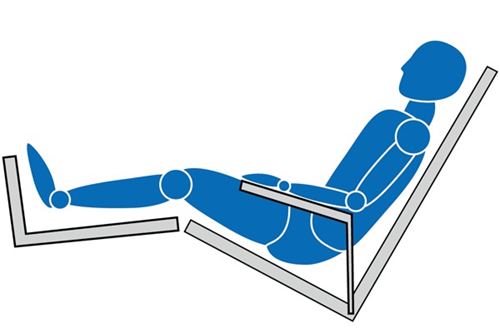-
Home
-
Understanding the Importance of Fowler’s Position
Understanding the Importance of Fowler’s Position
August 8, 2023
 During and after surgical procedures, proper patient positioning is essential to ensure patient comfort and avoid potential complications. One of the most common positions used is Fowler's position. In this article, we will discuss the importance of Fowler's position in patient care, the different types of Fowler's position, the advantages and disadvantages, and support devices that can be used when placing patients in this position.
During and after surgical procedures, proper patient positioning is essential to ensure patient comfort and avoid potential complications. One of the most common positions used is Fowler's position. In this article, we will discuss the importance of Fowler's position in patient care, the different types of Fowler's position, the advantages and disadvantages, and support devices that can be used when placing patients in this position.
What is Fowler’s Position?
Fowler’s position, also called semi-sitting position, is a variation of the supine position in which the patient lies flat on their back. Fowler’s position requires the head of the patient’s bed or operating table to be raised to an angle of 45 to 90 degrees with the knees slightly bent. This position can be applied to both adults and children and can be done manually or using an electric bed or table.
How Does Fowler’s Position Work?
Fowler’s position works by redistributing the patient's weight on the bed or table to promote venous return, respiration, and circulation. This position is often used for patients undergoing surgery on the posterior or lateral head, mouth, throat, shoulder, posterior cervical spine, or abdomen.
This position is also ideal for those experiencing respiratory distress, as it has been shown to improve chest expansion and promote breathing. The nasogastric tube (NGT) is also more accessible in Fowler's position, facilitating better feeding and medication administration.
When Should Fowler's Position Be Used?
There are several situations in which medical professionals need to place an operating table or patient’s bed in Fowler’s position, such as when a patient undergoes certain types of surgery, experiences difficulty breathing, or suffers from heart failure, pneumonia, or any other respiratory distress. The exact angle at which the head of the bed or table should be set depends on the type of procedure as well as the patient’s needs and comfort.
Fowler's Position Variations
There are three variations of Fowler's position: Low Fowler's, Semi-Fowler's, and High Fowler's. These variations are classified by the angle at which the head of the bed or table is set. While all these modified versions offer the same benefits as Fowler’s position overall, they each have slightly different use cases.
- Low Fowler’s Position: The patient’s head is elevated 15 to 30 degrees. This variation is ideal for resting after a procedure, reducing lower back pain, administering medication, and preventing aspiriation during tube feeding.
- Semi-Fowler's Position: The patient’s head is elevated 30 to 45 degrees. This position is ideal for feeding, lung expansion, and decreasing cardiac or respiratory distress.
- High Fowler's Position: The patient’s head is elevated 60 to 90 degrees. This position is ideal for breathing, eating, and swallowing.
Disadvantages of Fowler's Position
While Fowler's position has a range of benefits that promote patient safety and comfort, there are also potential risks or drawbacks. These disadvantages include the possibility of fluid accumulation in the lungs, skin injury, nerve damage, and pressure ulcers. Patients should be monitored closely by nurses or medical experts to prevent potential complications.
As with other patient positions, there are certain areas where pressure injuries are more likely if the proper supports are not used. High-risk areas for Fowler’s position include the occiput, scapulae, ischial tuberosities, thoracic vertebrae, olecranon processes, sacrum, coccyx, popliteal area, and calcanei.
Supporting the Patient in Fowler’s Position
When positioning a patient in Fowler’s position, it is important to ensure that the patient has adequate support, especially in areas that are at an increased risk of pressure injury. Many products offer the necessary support for patients in this position, including positioners, wedges, specialized chairs, and armboards.
- AliMed® AP Upright Positioners are especially effective for patients who cannot support themselves in an upright position, keeping the body erect and helping maintain proper positioning.
- SkiL-Care™ Elevating Bed Wedges can assist with comfortably positioning a patient in Fowler’s by elevating the upper body. These wedges resist slipping and provide secure, comfortable positioning.
- Invacare® Clinical Geri-Chairs can be adjusted to position a patient in any variation of Fowler’s. The padded seat and back provide increased patient comfort, and swivel casters offer easy transport.
- AliMed® Versa-Board Armboards offer safe, easy, and comfortable arm support. The three-point adjustment system allows for almost an infinite combination of settings when used with a Clark socket.
Fowler’s position is an essential aspect of patient comfort and safety both during and after surgical procedures. Medical professionals should ensure patients are in a safe and comfortable position, closely monitor the patient, and adjust the bed or table as required. If used appropriately, Fowler’s position can be a valuable asset in enhancing a patient's medical care and recovery.
Explore AliMed’s Surgical Positioning Guide to learn more about surgical patient positions and supporting products to help improve patient outcomes.